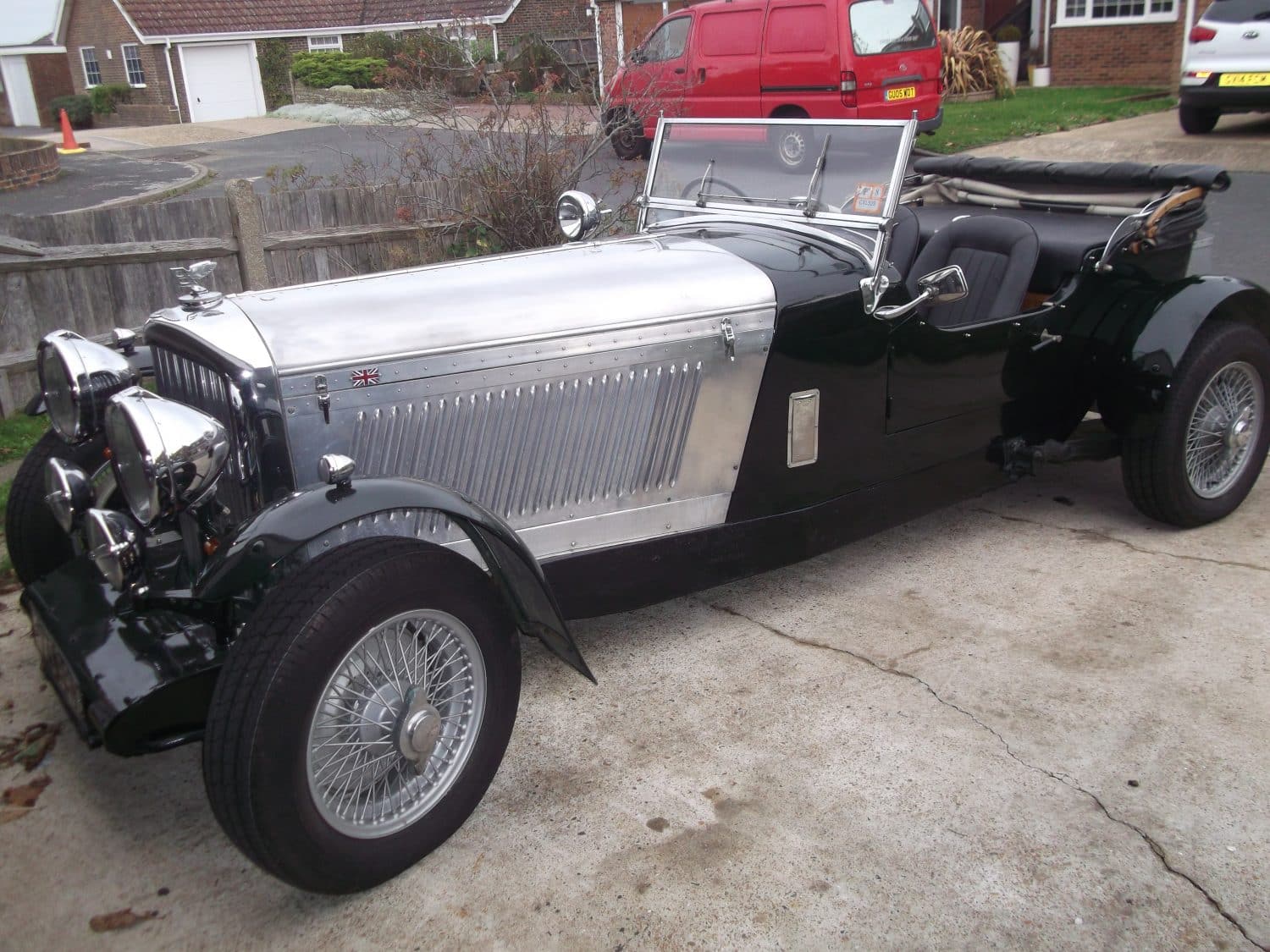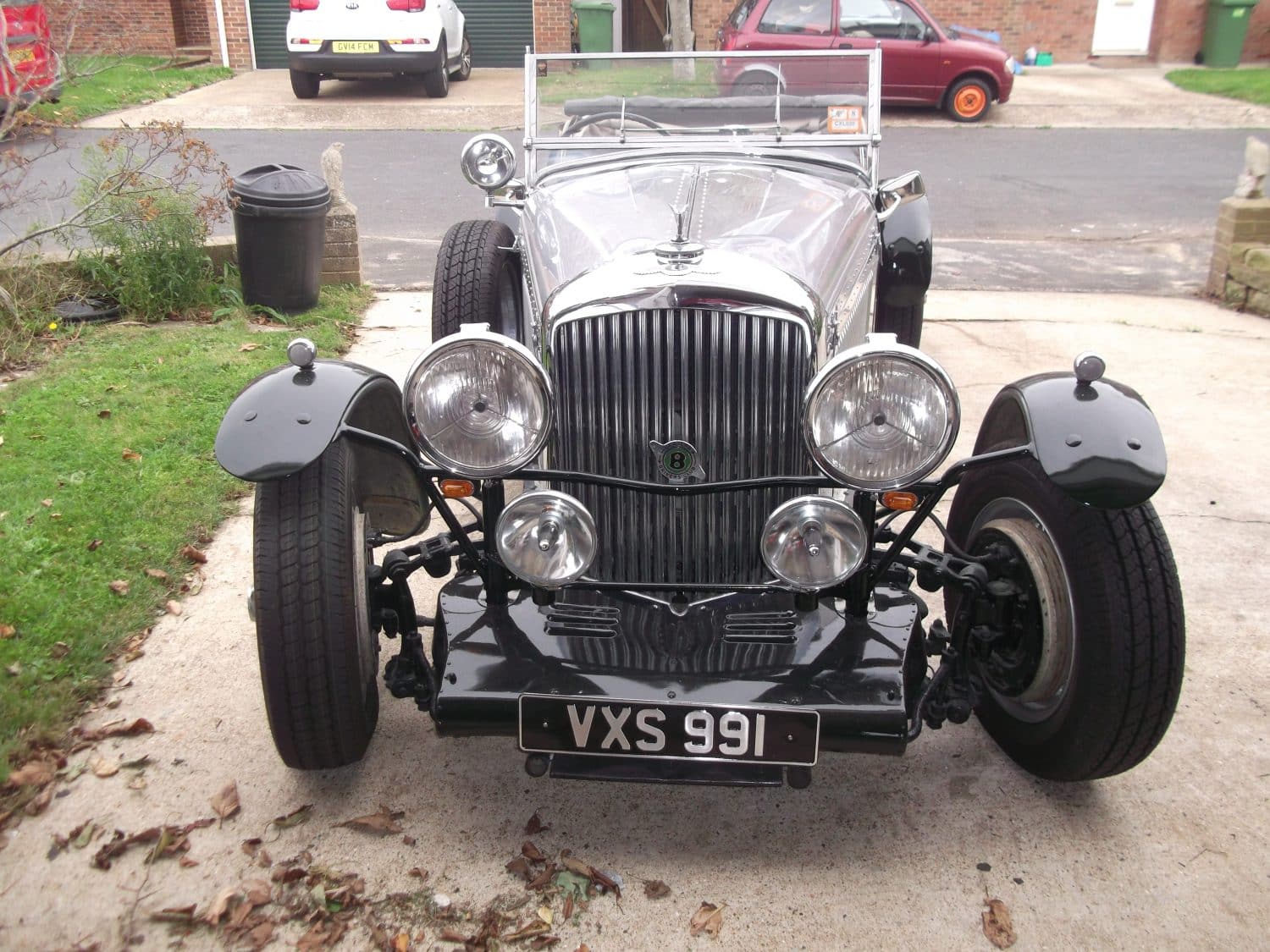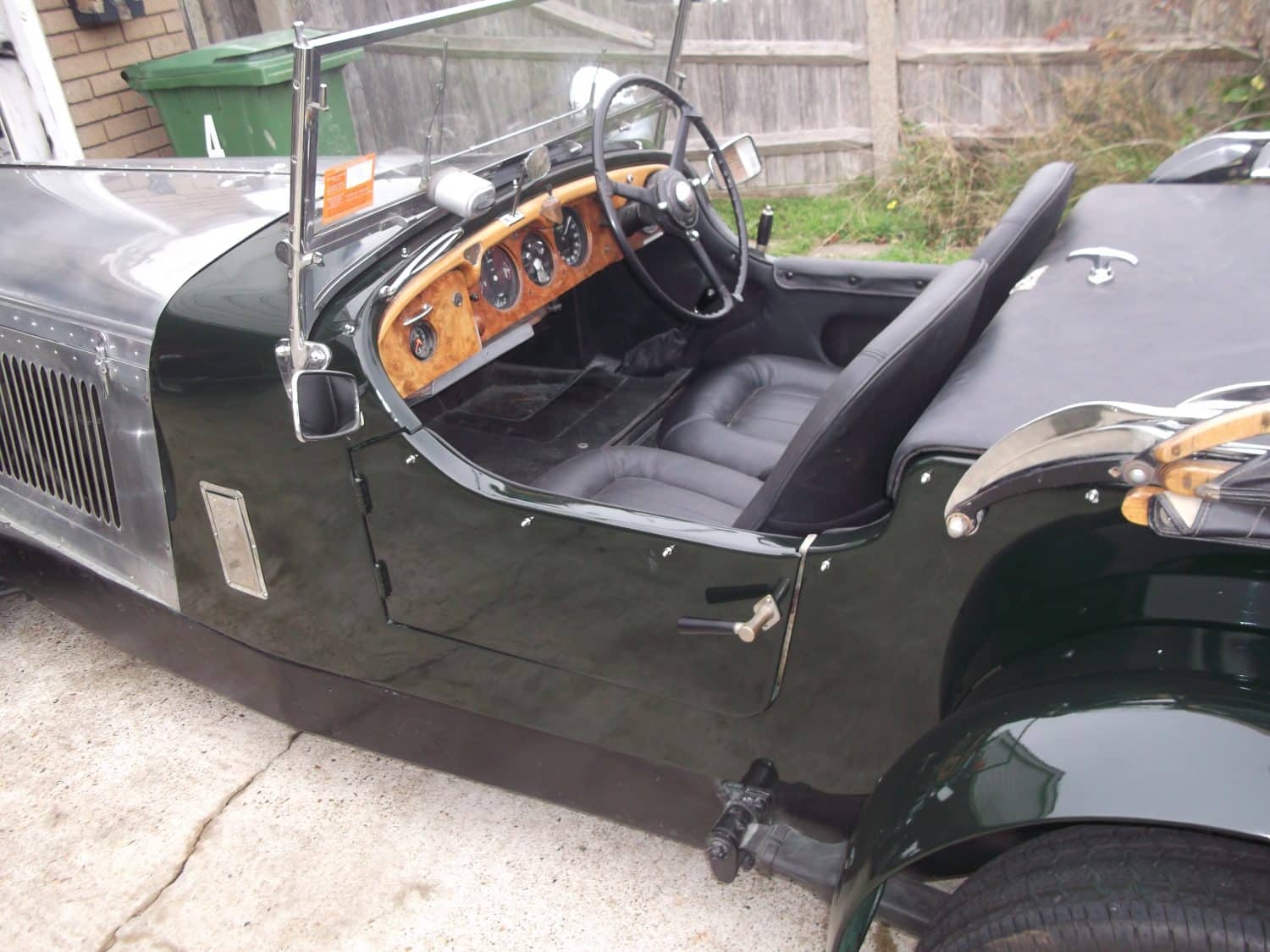Here we have a one of twelve very special Bentley specials built by the legendary John Anderson
Starting its life as a matching number. Our 1949 Bentley MK V1 was rebuilt in 1984 by the specialist restorer John Anderson, of vintage Bentley Special fame and manufacturer of the million-selling “Sugar Mouse”
It has been re-trimmed in recent years and sports new tyres.
It performs faultlessly and IS a matching number car.
It spent most of its life in Australia until the owner died and it was sold to Anderson’s son. It was shipped back to Scotland where the previous owner acquired it.
John Austin Anderson was an engineer, a confectioner, a restaurateur and car constructor.
Born in Crieff, Perthshire on the 12th August 1930 and got married in 1954 to Pamela Cousins, John Anderson ran a catering and confectionery business in Perthshire.
Specialising in Scottish sweets and is famous for the “Sugar Mouse” he is better known as one of the pioneer builders of Bentley “specials” in Britain.
The world of vintage motoring holds a particular fascination for those many individuals who enjoy the performance of vehicles from a previous generation and the most prestigious make of any vintage car is the Bentley, which has always attracted a substantial following from its earliest days.
Not all Bentley enthusiasts could afford a vintage model and of course by opening up a market to those who saw the potential in some pre- and post- Second World War cars which had fallen into a state of disrepair. Thus grew up a movement in the revival of old cars that otherwise would have been consigned to a lesser fate.
Anderson became an expert in this new activity.
He was born and grew up in the Perthshire market town of Crieff, where he was to spend almost all his life.
He attended the Morrison’s Academy and joined the Officers Training Corps as bass drummer in the school pipe band.
He moved south in 1949 to take a degree in production and mechanical engineering at the Technical School of the De Havilland Aircraft Company in Hatfield.
His intention was to join the RAF and he had already had his pilot’s licence. In 1953 it was discovered during the RAF medical examination that he was a diabetic.
As a career as a pilot was now out of the question, Anderson, newly married, returned to Crieff in 1954 to take over the catering business Gordon & Durward, founded in 1925 and taken over by his father, George (known as “Coffee Joe”), in 1947.
John Anderson developed it in particular as a manufacturing confectioner. The market for his products ranged from exclusive outlets in big cities to the legion of small businesses servicing the Scottish tourist industry.
One traditional line, the Sugar Mouse, blossomed in particular: in one year in the early 1970s the production total topped a million.
Although catering and confectionery took virtually all Anderson’s time, it was not where his heart lay.
His ambition to be involved with things mechanical was unfulfilled.
In 1970 he began a small private collection of motorcycles, the oldest being a 1926 Sunbeam and the newest a 1953 Norton International.
He restored everything to exacting standards.
In 1974 he turned his attention to Bentley motor cars and it was the beginning of an all-consuming interest.
Anderson’s approach was driven on the unusual history of the company.
Bentleys were built in Derby until the outbreak of the Second World War, when the production lines were given over to Merlin for Spitfire, Hurricane, Mosquito, Lancaster and other aero-engines.
After the war, Bentley production was transferred to a Rolls-Royce satellite factory at Crewe.
The pre-war practice was of sending out the chassis for coachwork designed by selected specialists was abandoned in favour of sending them to a reduced number of specialist body-builders.
Because post-war steel was often of poor quality, the bodies tended to rot, although the chassis generally remained strong.
This was where Anderson stepped in, applying his aeronautical engineering skills he had learned at De Havilland’s.
He would strip a car down to its chassis, clean it up, shorten the wheelbase and reinforce it with a cruciform, moving the engine back to improve the weight-distribution and thus the handling of the car.
He replaced the Bentley rear axle with a Jaguar one which was better to absorb the torque and power.
He generally rejected the easy option of fibreglass coachwork in favour of the traditional ash frame clad in aluminium.
His cars looked good, and they performed beautifully.
Anderson and his small team of helpers built no fewer than 12, Mark VI Bentley specials and the standard post-war model was nicknamed “the Big Bore” because of its power.
All the cars took two years of work before emerging as a “sports special”.
Each one was different and he learnt as he worked.
All of Anderson’s cars were sold on completion so that he could finance the next project and to even higher standards.
His scrupulous honesty ruled out any short cuts and for all that he was said to be a man of deep personal modesty, his rigorous approach set standards that are still observed by amateur builders.
Being only one of twelve ever built these very special cars do not come up for sale very often and Bridge Classic Cars feels honoured that we can offer such a rare car to one of our deserving customer.
A sure fire investment for the future and will stand pride of place in any collection.



